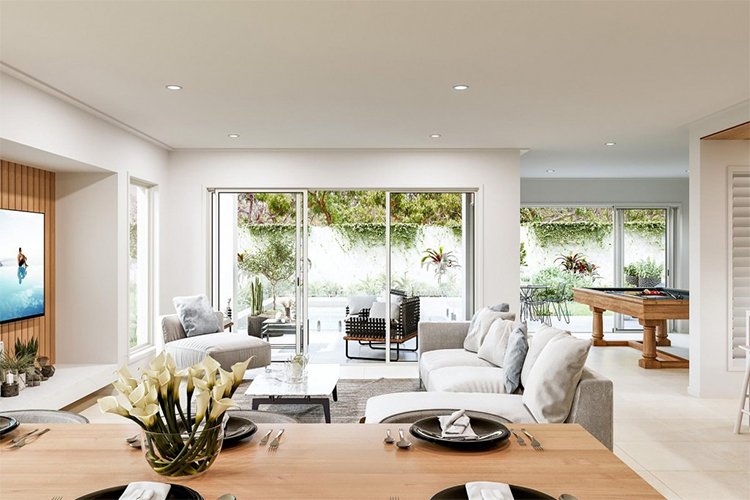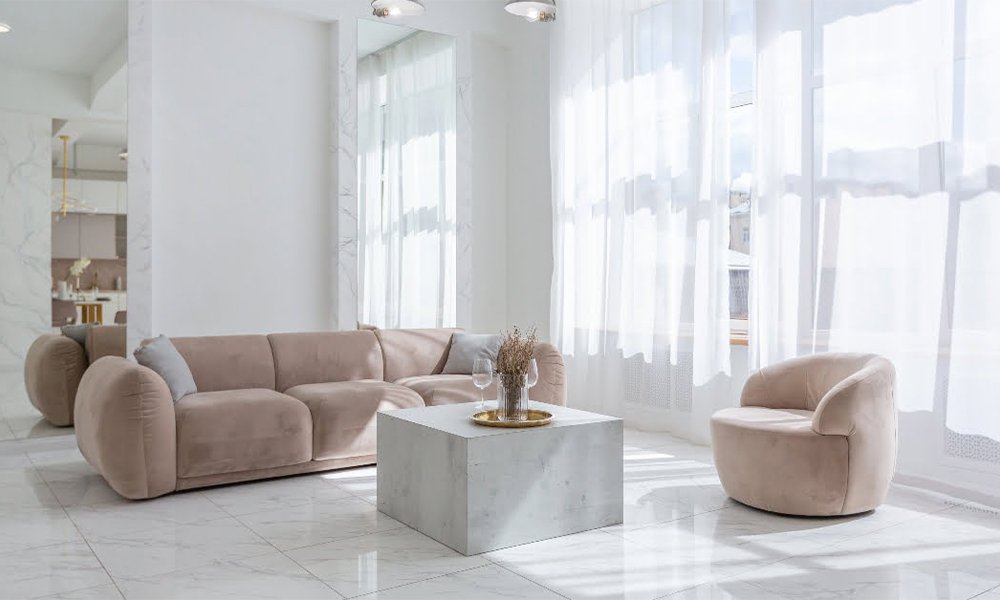Minimalism has become a popular design trend that focuses on simplicity, functionality and clean lines. Whether you’re moving into a new home or just looking to de-clutter, a minimalist approach to designing a home can help create a calm, organized and beautiful living environment. This guide will walk you through the basics of minimalist design and offer practical tips for a stylish, minimalist home.
1. Understanding Minimalism
At its core, minimalism is about reducing excess and focusing on what’s essential. The goal is to create a space that’s free of clutter, but still warm and inviting. Minimalism isn’t about stripping your home down to the bare essentials, but instead embracing simplicity in a way that feels natural and functional. In a minimalist home, every item has a purpose and contributes to the overall design.
Key elements of minimalism include:
Neutral colors: White, gray, beige, and soft earth tones create a clean, peaceful atmosphere.
Simple furniture: Functional, well-crafted pieces with clean lines are the foundation of a minimalist space.
Clutter-free surfaces: Clear counters and tables contribute to a sense of order.
Quality over quantity: Fewer items that are high-quality and meaningful make a bigger impact.

2. Start decluttering
The first step to creating a minimalist home is decluttering. This means getting rid of items that no longer serve a purpose or add value to your space. This may seem overwhelming at first, but it’s essential to creating a calm and organized home.
Here’s how to get started:
Tackling one room at a time: Don’t try to declutter your entire home at once. Start with one room, such as your living room or bedroom, and work your way through each room.
Sort items into categories: Use categories like “keep,” “donate,” and “throw away.” Be honest about what you use and what you don’t. Items with sentimental value can be kept, but avoid keeping things just because they’ve been in your home for a long time.
Clean surfaces: Minimalist homes have clean, clutter-free surfaces. Remove excess decorations, papers, and objects from counters, tables, and shelves.

3. Choose a neutral color palette
Color plays an important role in designing a minimalist home. Neutral tones like white, beige, light gray, and soft pastels are often used in minimalist design because they create a calm and unified look. A light and airy color palette makes rooms appear larger and more open while also contributing to a peaceful atmosphere.
Tips for using neutral colors:
Paint walls in light tones: Choose soft white or gray tones for walls to create a blank canvas. This helps to highlight the simplicity of the furniture and decor.
Add subtle pops of color: While neutral colors dominate minimalist spaces, you can add pops of muted colors like blush pink, olive green, or navy blue to add visual interest.
Limit to two or three colors: With minimalism, less is more. Limit your color palette to two or three shades to keep the space feeling unified.
4. Invest in simple, functional furniture
Minimalist design focuses on functionality, so your furniture should be both practical and aesthetically pleasing. Look for furniture with clean lines and minimal embellishments. The key is to choose pieces that serve a purpose and add to the overall simplicity of the space.
When choosing furniture:
Opt for quality: Instead of buying several cheap pieces, invest in a few well-made, durable pieces. Minimalist homes often have fewer pieces of furniture, so it’s important that each one adds value.
Keep it simple: Sleek, modern designs work best in minimalist spaces. Avoid overly ornate or decorative furniture, which can make the room feel cluttered.
Focus on comfort: While minimalist design emphasizes simplicity, your furniture should still be comfortable. Choose cozy sofas, chairs, and beds that invite relaxation.
5. Make use of open spaces
One of the key features of minimalist homes is the use of open spaces. Less is more, so leaving room for negative space can make a room feel more spacious and less cluttered.
How to maximize open spaces:
Arrange furniture wisely: Don’t overcrowd your rooms with too much furniture. Use fewer, larger pieces instead of filling the space with smaller items.
Let light in: Natural light enhances the feeling of openness in a room. Keep windows free of heavy drapes or opt for light, sheer curtains that let sunlight through.
Be mindful of accessories: In minimalism, decorations should be carefully chosen and limited. A single piece of art or a few decorative items is often enough to add personality without overwhelming the space.

6. Add texture and warmth
Minimalism doesn’t mean your home has to be cold or bare. You can add warmth and personality to a minimalist space by incorporating texture and natural elements. The goal is to keep things simple but inviting.
Here’s how:
Use natural materials: Wood, linen, cotton and stone are great ways to add texture and warmth to a minimalist space. Wooden furniture, woven rugs or linen pillows can soften the look of a room while maintaining the clean aesthetic.
Layer textures: In a neutral space, layers of textures can keep the room from feeling flat. Combine smooth surfaces like metal or glass with softer textures like wool or cotton.
Add greenery: Plants are a fantastic way to bring life and warmth to a minimalist home. A few well-placed houseplants can add color, texture and a sense of calm.
7. Limit decorations
Minimalist homes have fewer decorations, but the ones you choose should be meaningful and functional. A minimalist approach to decorating means that every object should have a purpose or contribute to the overall aesthetic of the room.
Tips for minimalist decorating:
Choose functional decor: Objects like mirrors, lamps, and clocks can serve both a functional and decorative purpose.
Go for quality, not quantity: A single piece of art or a well-designed lamp can have more impact than a collection of smaller items.
Use empty space wisely: With minimalism, empty space is just as important as the objects in the room. You don’t have to fill every shelf or wall—sometimes less is more.
Conclusion
Designing a minimalist home is all about embracing simplicity and making conscious choices about what you bring into your space. By keeping things tidy, choosing neutral colors, investing in functional furniture, and adding warmth with textures and natural materials, you can create a calm, organized, and stylish home that feels both modern and inviting. Whether you’re starting from scratch or just looking to simplify your current space, these tips will help you achieve a minimalist look that’s perfect for you.




No Comment! Be the first one.